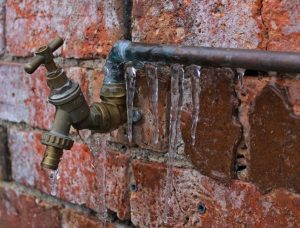
No homeowner wants to return to their house, attempt to draw a nice hot shower, and come to the realization that the pipes have somehow frozen.
What Causes Frozen Pipes
While this does not happen every time the weather turns cold, some homeowners are aware that there are particular circumstances in which it becomes more likely. There are certain water pipes that lack insulation and/or are located in a spot that puts them too close to the home’s exterior. This leaves them exposed too much colder temperatures for several months of the year. When there is a cold snap, the consistently lower temperature can ultimately impact the pipes themselves. When the ambient temperature is below freezing, ice develops within the pipes, stopping the ability of the water to flow.
Remedies for Frozen Pipes
There are some scenarios in which you may be able to handle this issue on your own, though you might need to enlist the help of professionals. If you think you know exactly where the ice blockage is situated, and you are able to get close to it, this might be a DIY job. Frozen pipes that sit in an extension of the structure may allow you to access a crawl space and use a hairdryer to heat the outside of the pipe and melt the ice. Never use an open flame of any type when attempting this. Applying heat for several minutes should resolve the issue and get the water flowing again.
If it is impossible for you to gain access the area containing the frozen pipe, it is best to contact your plumber who can provide assistance. This will help prevent you from having to tear out drywall or take other drastic measures to reach the pipe and restore the free flow of water.
